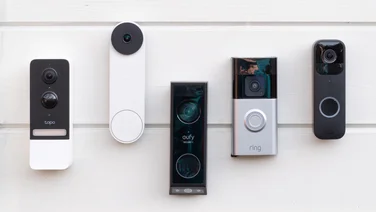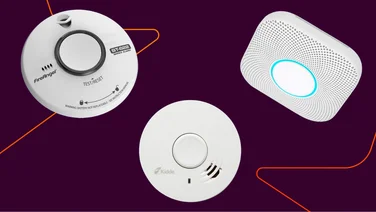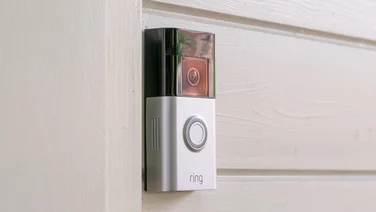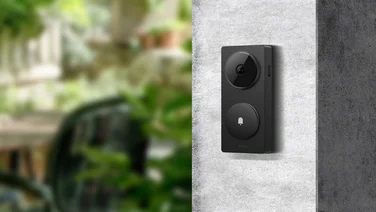To help us provide you with free impartial advice, we may earn a commission if you buy through links on our site. Learn more

We all want to feel a little safer at home, and having eyes everywhere is one way to feel like you have more control over your environment, especially when you’re away from home.
There are so many security camera options to choose from, that it can be easy to buy something that either won’t do the job you need it to, or will cause headaches down the line. So to help you avoid these pitfalls, avoid these seven common mistakes:
1. Buying a low-res camera
You’ve probably seen dozens of internet videos using security camera footage where things are so pixelated that you can barely make out what’s going on. That’s what happens when you pick a camera with a resolution too low for your needs.
We’re not suggesting every camera you buy needs to be an expensive 4K model, but that you should consider how much resolution you need to the type of surveillance that camera will be doing. This is particularly important if the subject in the video is likely to be further away, making it harder to see details such as faces or writing on clothing.

2. Blocking your camera’s IR LEDs
Many security cameras offer some form of night vision, and they achieve this using infrared LEDs to shine a light that’s invisible to the naked eye. Some cameras only use one or two, while others (usually outdoor models) will have a ring of these lights.
When you install the camera, it’s important you don’t block these off, otherwise you’ll end up with a lack of night vision, or if the IR beams are reflected back into the camera, you may end up blinding it.
3. Ignoring battery-powered camera options
It’s understandable that you may want the assurances of a wired setup for your cameras, but battery technology has advanced quite a bit over the years, and for cameras that are easily reachable it can be a workable solution to recharge the camera every few weeks.
Some cameras also have the option of adding a small solar panel or you can add your own ofter market USB solar panel if the charging port is accessible externally. Assuming you’re not living in the Arctic circle in winter, that should ensure the battery stays charged and you rarely need to charge it manually.

However, don’t forget about the option of Power-over-Ethernet (PoE). These cameras can do both power and data over the same network cable, although bear in mind that you will need a compatible Ethernet switch at the other end of the wire to make it work.
4. Not checking network coverage
Sometimes power is no issue, but getting your camera hooked up to your home network is. For most people, running an Ethernet cable from the camera to your router isn’t an option, so you’ll likely need to resort to Wi-Fi. Assuming this is the case, you will need to ensure you have adequate Wi-Fi coverage; this is particularly important for exterior cameras.
A quick way to check your coverage is to see if your phone can connect to the Wi-Fi in the spots you plan to install the camera. If the signal is weak, or you can’t connect at all, that’s a signal that you need to reposition the camera, or invest in extending your Wi-Fi network. You can do this quite cheaply, using a Wi-Fi extender, or it might be time to invest in a new wireless router or mesh system or an external antenna to hook up distant exterior cameras, such as those located on outbuildings.
5. Mixing brands and ecosystems
It’s common to build up camera coverage over time as your budget allows, but if you end up mixing camera brands, you can get into a situation where you need to use several different apps in order to view all of your cameras.
By staying within the same camera ecosystem you’ll save yourself from hopping between different camera apps, or having some cameras refuse to play ball with any unifying solutions you try.

If you’re of the more technical persuasion, it’s also worth checking to see if the cameras you plan to buy work with within the Home Assistant ecosystem. That way, if the worst happens and the manufacturer responsible for producing your cameras goes belly up, you’ll still have a working security system.
6. Not factoring in cloud subscriptions
If you want to record your footage, you have a few options. You can get a camera that has local storage like our current top pick, the Eufy Solocam S340. You can store footage on a local computer or NAS drive, or you can store footage in the cloud using a subscription.
Cloud storage is a popular solution, particularly among manufacturers as it gives them an ongoing source of income, even after you’ve bought the hardware. Indeed, for many cameras, the most famous being Ring, this might be the only way to store footage. Be careful of cameras that lock you into cloud storage like this, however, because the cost can escalate, especially if you add more cameras, or raise prices, as Ring did recently.
As Nick Drewe from Wethrift said: “One common pitfall is the tendency to underestimate local storage options. Attractive low-cost cameras have drawn many consumers, some are unaware they depend entirely on cloud subscriptions — which frequently carry hidden monthly charges and limited storage. Local storage (like microSD) and optional cloud backup is the better option for flexibility and long-term value.”
7. Overlooking smart home compatibility
These days, cameras are more than just basic surveillance devices. If you have a smart home setup using one of the major smart home standards, then it can be a real force multiplier to use cameras that can slot into that existing system.

It makes it possible to create smart automations, or to control your camera system in specific ways. So if you’re using something like (for example) Apple HomeKit, then it makes sense to pay special attention to cameras that work with HomeKit – you’ll then be able to and take advantage of smart automation, such as triggering audio announcements via smart speakers, or setting the lights to come on when motion is detected.
Jeff Ketelaars of Security Guards Only notes: “Another mistake I see commonly is that people rely only on cameras rather than integrating them within a broader security system (so things like motion lights, alarms, etc). Cameras are great deterrents and can capture the information needed for investigations, but for strong security, it’s vital to be more proactive.”
Keeping an eye out for the best cameras
With these key factors in mind, you should have little trouble picking out the right mix and make of camera for your needs, but as always we’ve tested the best options on the market, and you can read all about it in our roundup of the best home security cameras.
Once you’ve got your choices locked in, you can rest easy knowing you have an extra set of eyes looking out for your safety, as well as that of your property and loved ones.






